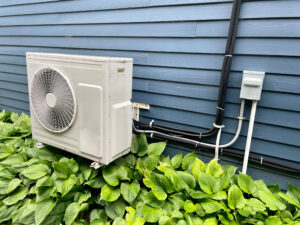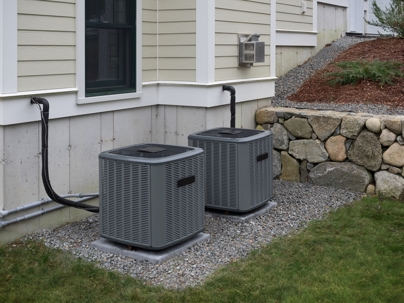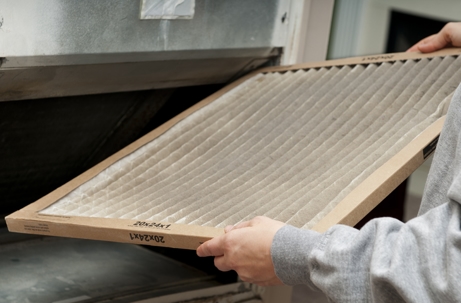Upgrading your home’s cooling system means weighing different setups, from ductless mini-splits to full central air conditioning. Each option brings unique benefits and considerations for efficiency, installation, and comfort. At Winds of Valley Heating & Cooling in Alexandria, VA, we help you pick the system that matches your lifestyle and budget.
Comparing Energy Efficiency and Operating Expenses
When examining Seasonal Energy Efficiency Rating numbers, ductless mini-splits often outshine central air systems. The lack of duct runs means you avoid losing cooled air through hidden leaks or poorly insulated channels. Mini-splits send air into each room, so compressors cycle less, and your electricity bill can drop by 20% or more compared with an older ducted system.
If your existing ductwork stays in conditioned space and the air handler draws fresh air efficiently, a modern central unit can still deliver competitive operating costs. Reviewing your insulation levels and typical thermostat settings helps you see whether the precision of zone control in a mini-split or the broad comfort of central AC aligns better with your needs.

Installation Impact and Up-Front Investment
Mini-split installation involves mounting indoor heads on a few walls and feeding three-inch lines through one wall penetration per head. That streamlined process often wraps up in two days without major drywall repairs or attic access. Initial equipment costs per cooling ton run higher for mini-splits, yet the faster labor can offset part of that premium. Traditional central AC installations extend from new duct runs, register placement, and possibly furnace modifications.
Adding central air to a home without ducts can stretch into a week of work, increasing framing and finishing costs. If you already have modern ducts and a healthy air handler, central AC becomes more budget-friendly. You’ll balance equipment price and labor against the construction disturbance you’ll face.
Comfort Control and Zoned Cooling
Ductless allows you to set different temperatures from bedroom to living room with simple wall-mounted controls or smartphone apps. That level of flexibility works especially well if your household has varied schedules or if some rooms are rarely used. You’ll use less energy cooling empty spaces and enjoy tailored comfort where you need it most.
Central AC ties all vents to one thermostat, so you may end up overcooling some areas to satisfy warmer spots. On the other hand, a single central system offers even airflow through well-designed duct layouts and hides vents. If your home has large open areas or a hallway network, a central system can deliver steady comfort without adding indoor units to every room.
Maintenance Needs and Reliability
Mini-split indoor units require filter rinses once a month and professional coil cleaning once a year. Outdoor compressors sit on a pad free from attic dust or rodent nests that sometimes plague duct systems. Central AC maintenance calls for filter changes, duct inspections, and coil cleaning inside an air handler.
That can include clearing attic plenums and treating duct linings. Both systems use similar compressor and blower technology, so lifespan expectations align. The real difference comes down to where debris accumulates and how accessible components are for trained technicians.
Noise and Visual Footprint
Indoor mini-splits operate at levels quieter than a conversation at low fan speeds. You’ll barely notice airflow in sleeping areas. Central AC blowers in air handlers can run louder and send duct-borne noise into living spaces. Outdoor mini-split compressors also tend to operate more quietly since they match capacity to each zone rather than running full blast for an entire home. Visually, mini-splits sit on walls or ceilings, which some homeowners find intrusive, though you can choose floor-mounted or cassette options. Central AC vents and return grilles blend into walls or ceilings, offering a subtler look without the presence of multiple indoor units.
Ideal Use Cases and Future Flexibility
If you’re finishing a basement, converting an attic, or remodeling without easy attic or crawlspace access, a ductless mini-split fits more neatly. It also adapts well to phased renovations, adding zones later often requires only new refrigerant lines and low-voltage wiring. In contrast, extending central AC to new areas demands duct splicing, possible rerouting of vents, and careful sealing.
However, if you already have a high-performance duct network, central AC gives your entire home a single system to manage. Both solutions can scale with your needs, but mini-splits offer modular growth with minimal construction, while central AC leans on a unified network that serves all rooms together.
Making the Right Choice for Your Home
Choosing a ductless mini-split or central AC depends on your home layout, budget, and cooling needs. In addition to system installations, Winds of Valley Heating & Cooling offers seasonal tune-ups, air quality assessments, and thermostat upgrades to keep your new unit running smoothly. Ready to upgrade your comfort and control? Call us today to schedule your personalized consultation.







